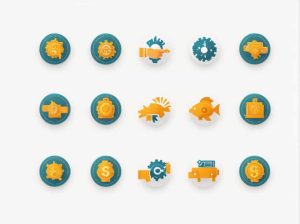In economics opportunity cost refers to the value of the next best alternative that is foregone when making a decision. Many people wonder whether opportunity cost is an avoidable cost or if it is an inevitable consequence of decision-making.
This topic explores the concept of opportunity cost how it differs from avoidable and unavoidable costs and its implications for businesses individuals and policymakers.
What Is Opportunity Cost?
Opportunity cost arises whenever a choice is made between two or more options. It represents the benefits that could have been gained if a different decision had been made.
For example:
- If a company invests $1 million in new machinery instead of marketing the opportunity cost is the potential revenue that the marketing campaign could have generated.
- If an individual spends time watching TV instead of working on a freelance project the lost income is the opportunity cost.
Opportunity cost is a fundamental concept in economics because it highlights the trade-offs involved in decision-making.
Is Opportunity Cost an Avoidable Cost?
Understanding Avoidable and Unavoidable Costs
To determine whether opportunity cost is avoidable it is important to distinguish between avoidable costs and unavoidable costs:
- Avoidable Costs: Expenses that can be eliminated by making a different choice. Example: A company can avoid renting an office by switching to remote work.
- Unavoidable Costs: Expenses that must be incurred regardless of the decision. Example: Depreciation of equipment is an unavoidable cost for a manufacturing firm.
Why Opportunity Cost Is Not Always Avoidable
While opportunity cost involves trade-offs it is not always avoidable because:
- Every decision involves a sacrifice – No matter what choice is made something else is always given up.
- Resources are limited – Time money and labor are finite forcing individuals and businesses to prioritize.
- Uncertainty exists – Even if a decision is reversed the previously lost opportunity may no longer be available.
For instance if a business chooses not to hire additional staff the lost productivity is an opportunity cost that cannot be recovered later.
Examples of Opportunity Cost in Different Sectors
1. Opportunity Cost in Business
Companies constantly face trade-offs when allocating resources. Some common examples include:
- Capital Investment Decisions: Choosing between expanding operations or upgrading technology.
- Hiring Choices: Employing more staff vs. automating processes.
- Product Development: Launching a new product vs. improving existing ones.
Failing to consider opportunity cost can lead to inefficient resource allocation and lost profits.
2. Opportunity Cost in Personal Finance
Individuals experience opportunity costs in their daily financial decisions such as:
- Spending vs. Saving: Buying luxury items vs. investing for the future.
- Career Choices: Pursuing further education vs. entering the workforce early.
- Time Management: Working extra hours vs. spending time with family.
By recognizing opportunity costs individuals can make more informed financial and lifestyle decisions.
3. Opportunity Cost in Government Policy
Governments also encounter opportunity costs when making policy decisions:
- Infrastructure vs. Social Programs: Investing in roads vs. healthcare.
- Tax Cuts vs. Public Services: Lowering taxes vs. funding education.
- Environmental Policies: Promoting industrial growth vs. protecting ecosystems.
Considering opportunity costs helps policymakers create balanced and sustainable economic strategies.
How to Minimize Opportunity Costs
1. Prioritization and Strategic Planning
Businesses and individuals can reduce opportunity costs by:
- Identifying the most valuable alternatives before making decisions.
- Conducting a cost-benefit analysis to assess potential trade-offs.
- Setting long-term goals to align choices with future growth.
2. Improving Decision-Making Skills
To minimize regrets and lost opportunities:
- Gather reliable data before making major financial or business decisions.
- Consider both short-term and long-term impacts of each option.
- Avoid making impulsive choices based on emotions.
3. Leveraging Technology and Innovation
Technology can help reduce opportunity costs by:
- Automating repetitive tasks freeing up time for strategic activities.
- Improving data analysis allowing for better forecasting.
- Enhancing efficiency leading to higher productivity and profitability.
For example businesses that invest in AI-driven analytics can make more data-driven decisions reducing potential opportunity costs.
Opportunity cost is a real and unavoidable aspect of decision-making. While it is not a direct expense it represents the value of foregone alternatives making it an essential consideration in business personal finance and government policy.
By understanding and minimizing opportunity costs individuals and organizations can make better choices optimize resource allocation and achieve long-term success.



